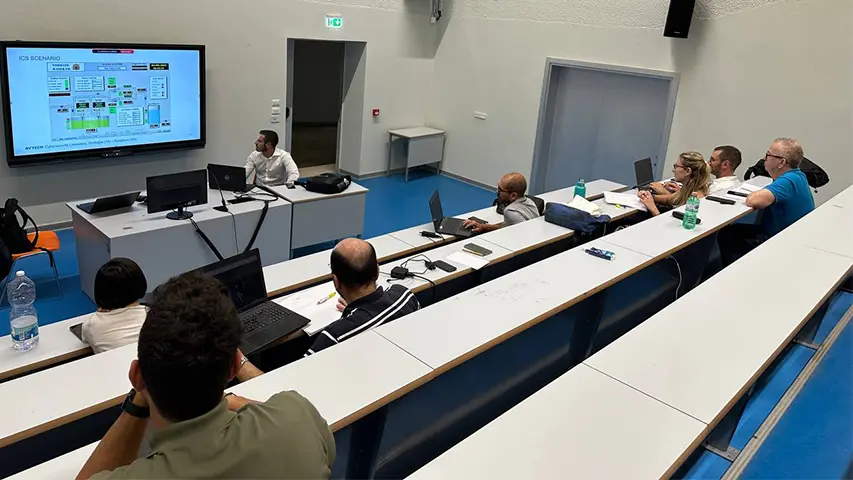Il Gruppo BV TECH
Società
Persone
Milioni € di ricavi
%
R&D
“Il Progetto di Ricerca a garanzia della Sovranità e della leadership nel campo delle Tecnologie ICT e della Cybersecurity”
Raffaele Boccardo – CEO BV TECH
Soluzioni innovative di sicurezza informatica
SOC
Monitoraggio e analisi degli eventi di Cybersecurity.
SIEM
Raccolta e analisi delle informazioni di sicurezza.
Cyber Range
Simulazione di architetture di rete e di sicurezza.
NGFW
Next Generation Firewall modulare a elevate prestazioni.
NIDPS
Sonda di rete con funzionalità Deep Packet Inspection (DPI) e Intrusion Detection/Prevention System (IDS/IPS).
Asset Inventory
Sistema per Amministrazione, gestione allarmi, distribuzione software e verifica vulnerabilità delle applicazioni di sicurezza.
Situation Room
Piattaforma per una gestione avanzata delle informazioni di sicurezza e la creazione di una “Cyber Operational Picture” avanzata.
Passione e impegno per l’innovazione
Donne e Uomini con competenze interdisciplinari al servizio della ricostruzione dell’industria ICT per affrontare le sfide della Cybersecurity.
Un contesto lavorativo inclusivo per coltivare le potenzialità delle persone e favorirne la crescita e la partecipazione diretta alla costruzione diretta di valore.
Collaborazione consolidata con le migliori università e istituti di ricerca italiani e internazionali per la selezione, l’inserimento e la valorizzazione dei migliori talenti.
Percorsi di formazione e aggiornamento professionale continuo.
Partecipazione diretta ai grandi progetti di Trasformazione Digitale in Italia e nel Mondo.
News

Nuovo rapporto di ricerca accettato per la presentazione a ICAART 2026
23/12/2025
Il rapporto di ricerca “JewelCVSS: A Domain-Tuned LLM for Automated Vulnerability Scoring”, realizzato dai colleghi Stefano Valcada, Antonio Maci, Roberto Lorusso, Alessandro Santorsola e Pietro Spalluto, è stato accettato per la presentazione alla “ICAART 2026.

BV TECH allo short master “Cybersecurity for Industrial Control Systems” (CICS) di PoliBA
30/09/2025
Lo scorso 27 ottobre 2025, i colleghi del CyberLab di Grottaglie e Rutigliano hanno contribuito allo short master “Cybersecurity for Industrial Control Systems” (CICS) organizzato dal Politecnico di Bari.

BV TECH ha ottenuto la concessione del brevetto di invenzione industriale relativo a un innovativo “Metodo di riconoscimento di malware basato su analisi di API”
05/09/2025
BV TECH ha ottenuto la concessione, da parte dell’Ufficio Italiano Brevetti e Marchi del Ministero dello Sviluppo Economico, del brevetto di invenzione industriale relativo a un innovativo “Metodo di riconoscimento di malware basato su analisi di API”.





Progetto finanziato dal Fondo Europeo di Sviluppo Regionale Puglia POR Puglia 2014 – 2020 – Asse I – Obiettivo specifico 1a – Azione 1.1 (R&S), e con il supporto dell’Università di Bari e del Massachusetts Institute of Technology (MIT).





